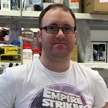-
Xiaohan Li

Current Job::
Investigator scientist
-
Verity Woodhall

Current Job::
Clinical Scientist in Bioinformatics – Genomics
-
Vanesa Alvarez

Current Job::
Postdoctoral research assistant at University of Dundee
My latest work:
DNA replication is an essential process for the division of the cells. When we think about DNA replication, a double helix being duplicated comes to our minds. We always forget about the replication of the whole set of proteins that interacts with the DNA molecule. They have to be duplicated, too, and preserved in the same position they occupied in the mother DNA molecule. My current project is the study of how these proteins are conserved along the cell cycles.
-
Sylvia Soldatou
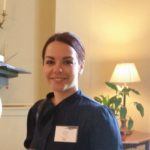
Current Job::
Research Scientist, University of Aberdeen
My latest work:
One of my recet projects involved the discovery of new molecules with antibiotic activity from fungi. We isolated those fungi from marine sponges that we collected in the Red Sea and from plants collected in Wadi El Natrun, a valley in Egypt. The idea behind that project was to use the isolated antibiotic molecules for textile functionalisation, tyring in that way to mimic the ancient Egyptians who were using local plants and herbs known for their anitbacterial properies when preparing the textiles to wrap the mummies.
-
Susan Cartwright

Current Job::
Senior Lecturer in Physics and Astrophysics, University of Sheffield
My latest work:
I am currently working on neutrinos from supernovae. Just over 30 years ago, a couple of dozen neutrinos were detected from a massive star that exploded in the Large Magellanic Cloud, 160 thousand light years away. Someday – preferably someday quite soon! – a similar massive star will be seen to explode in our own Galaxy (we expect that this happens about twice per century, on average), and with much larger neutrino detectors and a closer source, we would expect to see thousands of neutrinos. This has the potential to lead to a greater understanding of the process by which massive stars explode, which is not only interesting in its own right but important in understanding how we came to be here: the oxygen you are breathing was produced in just such a massive-star explosion. We are trying to understand the extent to which observations of neutrinos from a Galactic supernova could help us to distinguish between different models of the explosion (and perhaps also tell us more about neutrinos themselves).
-
Shruti Turner

Current Job::
PhD Student and Data Mentor
My latest work:
I am looking at the part of the prosthetic limb that attaches to the body. I’ve been working with surgeons, amputees and rehabilitation teams to find out what the problems are, so I can look at ways to solve them.
I have been able to create a picture of the pressure inside the socket to see how they are damaging amputees’ legs so that we can change how we make sockets and teach amputees to walk to stop this from happening in the future.
-
Scott Lawrie

Current Job::
Particle Accelerator Physicist at the Rutherford Appleton Laboratory
My latest work:
I’m project manager and lead designer of a big particle accelerator upgrade. We’re aiming to replace clunky Soviet-era technology with something modern, efficient and beautiful. This involves hundreds of kilowatts of power, lots of electromagnets and over a million pounds of expense! I’m really excited to be putting it all together to see if my designs work as planned, and to improve the entire accelerator complex for our visiting scientists.
-
Savannah Clawson
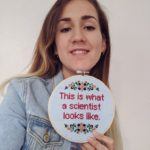
Current Job::
PhD Student at the University of Manchester (currently based at CERN)
My latest work:
I am currently working on making the first observation of the process of two light particles (photons) smashing together to produce two W-bosons (these are particles that belong to the so-called Weak Force). This process is interesting because a lot of new physics theories predict that it is more likely to happen compared to the same process in our “Standard Model” of physics – so if we see anything unexpected, this would be new physics and a new discovery!
-
Reka Nagy

My latest work:
Many serious diseases, affecting millions of people worldwide, have complex genetic causes. For example, two people could both have osteoporosis (a disease where bones become brittle and fragile), but due to two different reasons – one person might have a faulty gene that can no longer deposit minerals into the bone as efficiently, while the other person might have a mutation in a gene that leads to them having bone cells that die more easily and can’t replenish themselves fast enough.
This has the consequence that a drug that helps treat the first person by restoring bone mineral deposition will not be effective if given to the second person to treat their osteoporosis.
A second problem is that so far, we have only conclusively managed to pin down a handful of culprit genes – in fact, for most of the ‘common’ diseases (those that affect a large number of people), the majority of their genetic causes are still unknown.
The aim of my job is to try to find some of the missing pieces of this genetic puzzle. I try to find new ‘culprit genes’ that might be involved in certain diseases. New drugs can then be developed (or existing drugs repurposed) to repair the biological process that broke down because this gene was faulty. This means that we will be able to treat more people who have that disease, or even enable the first ever treatment for diseases for which no drugs currently exist.
-
Rebecca Wong
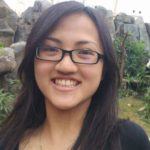
Current Job::
Safety Case Consultant
My latest work:
I am working on the JET safety case for operating with tritium. Tritium is a tricky material to manage because it is very mobile and is rather dosey!
-
Rebecca Shaw

Current Job::
PhD Student
My latest work:
I’ve been working on looking at the genes involved in the development of eyes 👀 and also looking at what genes are involved when things go wrong with eye development. Our eyes are so important and so it’s important to understand why sometimes they don’t work very well!
-
Philippe Gambron
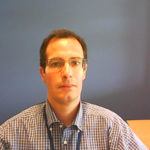
Current Job::
Computational scientist
My latest work:
My background is in particle physics and I am trying to pursue it on the side but, at the moment, I am working in high performance computing.
-
Paul Laurance-Young
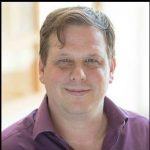
Current Job::
Specialist Biomedical Scientist and Training lead in Cellular Pathology at Derriford Hospital, Plymouth and…
Honorary lecturer in Histology and Cellular Pathology at the University of PlymouthMy latest work:
Working on a new apprenticeship program for healthcare scientists; Training students with no degree to become Biomedical Scientists of the future
-
Nikolai Adamski

My latest work:
Wheat is an important staple crop (it provides ~20% of calories and protein consumed worldwide). With the global population predicted to hit 10 billion by 2050, food production has to increase ~50-60%. And that in the face of climate change and dwindling resources.
Yield is a complex trait that is difficult to manipulate; changing a single yield component often results in so-called compensation effects that negate most of the yield gain. Grain weight is a yield component that is determined late in the life cycle of a wheat plant and is thus less likely to be compensated by other effects. This makes it an ideal starting point to try and dissect yield in wheat.
I am using both at natural variation of grain weight, e.g. between different cultivars of wheat as well as induced variation such as can be found in the wheat TILLING population and is interested in elucidating the function of known regulators of grain weight such as TaGw2 as well as identify and characterise novel loci. Understanding when, where and how these genes act on grain development will help us to increase grain weight and hopefully yield as well.
-
Natalie Fowler

Current Job::
Senior Critical Care Scientist
My latest work:
I am currently working on lots of different projects; how we respond to major incidents, auditing sedation (medication that we give to put patients to sleep) useage, looking at improving how we transfer patients outside of intensive care and at some ways of improving care of babies who are born earlier than they are supposed to be!!
-
Nadine Mirza

Current Job::
- PhD student at the University of Manchester working on the DOME Project: Dementia in Ethnic Minorities.
- Clinical neuropsychology research assistant at the Salford NHS Trust
- Research assistant at the University of Salford, working on the CICA Project: Communities In Charge of Alcohol
-
Meirin Oan Evans

Current Job::
PhD student at the University of Sussex and CERN
My latest work:
I prepare CERN data to release openly for use in education with students of about 16 and older. All goes on http://opendata.atlas.cern
-
Max Jamilly

Current Job::
I’m a PhD student in Synthetic Biology at Oxford University
-
Lucy Budge
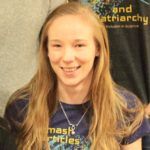
Current Job::
PhD Student
My latest work:
I’m currently working on collider physics – looking at specific processes that happen when we collide protons at experiments like the LHC at CERN.
Specifically I’m studying processes involving the Higgs boson and 4 gluons, this requires a lot of maths since the Higgs doesn’t interact directly with gluons! So we have to add in what’s known as a “loop” (in our case a top quark).
The image below is an example of a loop:

-
Liam Perera
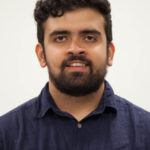
Current Job::
PhD Student
My latest work:
Im interested in the Icy Moons of our solar system. Specifically Enceladus, a moon of Saturn, and Europa, a moon of Jupiter.
These moons are covered in thick icy crusts much like our rocky crust on Earth but made from ice. Beneath their crusts we think there are oceans of liquid water. It may be possible for simple, single-celled life to survive in these environments like Bacteria.
I look at how these microorganisms live within icy environments and how we may look for them if we sent a rover or lander mission to their surfaces.
-
Leah Morgan
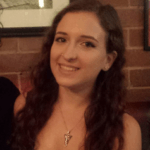
Current Job::
Diagnostic Project Engineer
My latest work:
I’m a physics graduate working as an engineer in fusion energy!
My main projects include designing and installing radiation shielding for some of the equipment close to our fusion reactor. We have a lot of high-energy experiments coming up and we know the radiation is going to destroy all the electronics, fibre optic cables, and rubber seals!
-
Jose Brandao-Neto

My latest work:
How proteins want to do chemistry.
And lining up my new book, whose title will be Adventures in Artificial Intelligence and Structural Biology – Tips, Tricks and Music from Proteins, coming out to Amazon Kindle soon as a D.J. Protein and D.J. DNA Excellent Science Books Series (I’ll post a link here when ready).
-
Helena Paterson
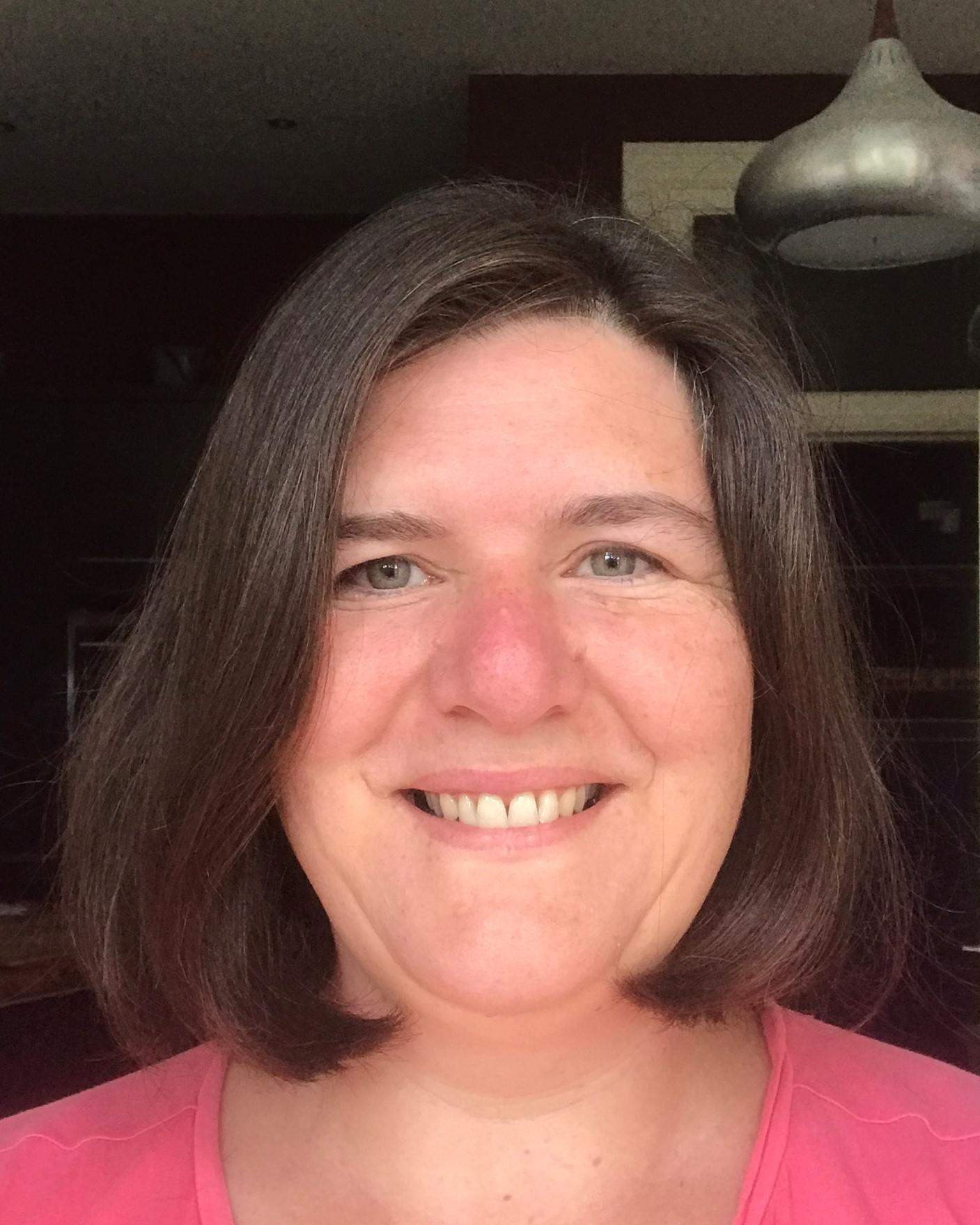
Current Job::
Lecturer at the University of Glasgow
My latest work:
My latest work is about the perception og gender stereotypes in children’s TV. We ask children what TV programmes they watch and then see if we can understand what stereotypes are present in those programmes.
-
Hayley Pincott

Current Job::
Associate Pratitioner Healthcare Scientist
My latest work:
Part of my work involves assisting the pathologists with dissection, this is my favourite part of the job. We get in human tissue descibe and dissect it, then overnight it goes on a machine to remove all the water then in the morning we cut it into really thin sections and put them onto a slide which we stain. The slides then get taken to the consultant pathologists who produce a report and help diagnose what is wrong with the patient so we can start treatment or managing a disease. So although I don’t have a current project like researchers do I’m continuously doing this with each patients case that comes in.
-
Harrison Prosper
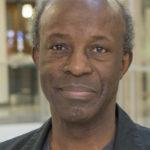
Current Job::
Kirby W. Kemper Endowed Professor of Physics, FSU, USA
-
Hannah Currant

Current Job::
PhD Student in Biological Sciences
My latest work:
I’m trying to use images of the human eye to get measurements about the retina, and then see if genetics is effecting these measurements. The eye measurements tell us about the shape of the eye, and the shape of the eye is effected by several diseases, such as glaucoma. So by looking for genetics that is effecting the shape of the eye, we hope to find genetics to do with these diseases. This may help us find ways to improve how we diagnose and treat these diseases.
-
Greg Heikel
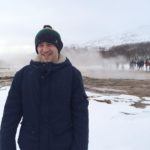
Current Job::
I am a trainee clinical scientist at the City Hospital in Nottingham. I will train for three years before qualifying and working as a clinical scientist in the NHS.
-
Gerry McLachlan

Current Job::
Group Leader, The Roslin Institute
My latest work:
I work as part of the UK Cystic Fibrosis Gene Therapy Consortium and, as the name suggests, we’re trying to develop gene therapy for cystic fibrosis. The Consortium has been running for almost 20 years now. It is a collaboration between the University of Edinburgh, the University of Oxford and Imperial College London.
Within the Consortium, our team at Roslin is using sheep as a model to study gene delivery to the lung in people. We have been involved in a lot of preclinical testing of gene therapy vectors, which we then try to develop and optimise. Over the years, our gene therapy vectors have even gone as far as clinical trials in cystic fibrosis patients with some success.
In the past few years, we’ve been looking at using a new viral-based vector, giving us a very optimistic view for the future. This viral based vector, an SIV vector which can cause disease in primates, is similar to HIV. It is essentially the same kind of virus therefore it has to be modified to prevent it from being harmful.
We have been working on these viral-based methods for a while and it seems that they are more efficient than the non-viral systems used previously. The advantage of the viral mechanism is that SIV integrates into the genome of patients receiving treatment.
We’re quite optimistic and we’ve got funding in place from the Wellcome Trust and the Department of Health through the Health Innovations Challenge Fund that allows us to do clinical trial. We’ve also recently partnered up with a pharmaceutical company, which allows us to do a much more comprehensive program and hopefully get to clinic quicker. We really are quite optimistic for the future as this partnership may really provide us with a lot more resources, which we really need to be able to make this a viable treatment for patients.
https://www.research.ed.ac.uk/portal/en/persons/gerry-mclachlan(fca5cb60-7bf8-4ac4-a6e1-f8c170025c40).html
-
Gabriela da Silva Xavier

Current Job::
Senior Lecturer in Cellular Metabolism
My latest work:
I work on proteins that control energy balance- fuel sensors, if you like- and one of the proteins that I work on seems to be regulating energy balance by its action in different parts of the body. For example, we have shown that this protein controls the work of the cells in the pancreas that regulate glucose balance and that people with type 2 diabetes have lowered levels of this protein in these cells. Recently, I found that mice that lack this fuel sensor eat more, and they eat more at the wrong time of day, suggesting that this protein is important in regulating appetite and responses to hunger. I am currently trying to figure out how this protein is doing this.
-
Fern Johnson

Current Job::
Trainee Clinical Scientist in Bioinformatics (Genomics)
My latest work:
Clinical scientists are usually involved in introducing new tests or improving the genetic testing service, but I’m particularly excited about a project I will be starting next year. As part of my training program I also complete an MSc part time, which includes a work based research project. I’ll be designing an analysis pipeline for a new testing service. Rather than looking for variants in genes, I’ll be looking at microsatellite instability. In the genome, microsatellites are short, repeating sequences – like AGAGAGAGAGAG. The number of repeats should be the same in every cell, though sometime mistakes in DNA replication can result in the microsatellite growing or shrinking in replication, so it’s not the same in all cells – this is called microsatellite instability and can be seen in cancerous tumours with faulty mismatch repair proteins, which normally guard against mistakes in DNA replication. In colorectal cancers, whether a tumour has stable or unstable microsatellites can determine how well some chemotherapy will work. At the moment we look at gene variants in colorectal tumours through next generation sequencing, but microsatellite testing is a separate test. If we could run both tests at the same time, it will help get the results out quicker, so that a patient’s doctors can make faster decisions about their treatment.
-
Eugene Gardner

Current Job::
Postdoctoral Fellow (2017-Present)
Wellcome Trust Sanger Institute, Lab of Dr. Matthew E. Hurles, FMedSci
Study of structural variation in developmental disorders and human populations using whole genome, whole exome, and microarray sequencing approaches.My latest work:
I focus on the diagnosis of children with rare developmental disorders (DD) as part of the Deciphering Developmental Disorders (DDD) study. Approximately 45% of patients in DDD have a single base change compared to their parents that explains their condition. My work involves trying to find diagnoses for the remaining 55% in two different ways. The first involves identifying changes in DNA that are different compared to their parents, but in my case, I look for very large parts of the human genome that are completely gone. The second is by trying to understand how changes children inherit from their parents could cause their disorder. Interestingly, some individuals also carry changes that, if observed in our patients, would be considered likely causative. I am currently working to understand how are these healthy individuals are “protected” from showing the same symptoms as our recruited patients and if they can help us to understand the genetics of our remaining DD patients.
-
Emma Meaburn

Current Job::
Dr Emma Meaburn is a behaviour geneticist based at the Centre for Brain and Cognitive Development, embedded within the Department of Psychological Sciences at Birkbeck. She is co-director of the Genes Environment Lifespan (GEL) laboratory and a member of the Centre for Educational Neuroscience (CEN).
My latest work:
One of the core aims of my research lab is to identify the genetic and environmental causes that play a part in making people different, and explore how these causal processes work.
A lot of progress has been made in identifying genes that contribute to risk for autism, but currently little is known about how (and when) they alter brain development. We think this gap in our knowledge needs to be bridged, so at the moment we are hard at work in the BabyLab studying young children and infants who have an older sibling with a neurodevelopmental disorder (Autism, or ADHD). We are examining how genes linked to ASD or ADHD influence brain activation and brain development in early life, and infant social behaviour.
-
David Ho
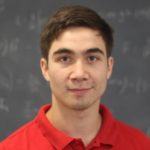
Current Job::
PhD Research Student
My latest work:
I’m studying a phenomenon where a strong enough magnetic field is actually unstable, and if we could get a magnet strong enough we’d get particles popping out of thin air.
-
Carsten Welsch
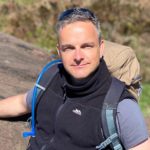
Current Job::
Head of Physics Department at the University of Liverpool
Leader of the Liverpool Accelerator Science cluster
My latest work:
We are designing a special monitor that can characterize the beam of the High Luminosity Large Hadron Collider. There will be an upgrade to the world’s largest and highest energy accelerator which will make it even more powerful – so powerful, that the current diagnostics to fully characterize the proton beam will no longer work.
We are using a supersonic jet which we cross with the main LHC beam to measure the proton beam – (almost) without touching it. The monitor is a very sophisticated piece of equipment and we are excited to contribute this to the HL-LHC.
-
Bruno Silvester Lopes

Current Job::
Lecturer in Microbiology (2022-present)
My latest work:
How bacteria develop resistance and I am working on Campylobacter (the #1 cause of bacterial gastroenteritis in the UK). It actually costs the UK economy 1 billion pounds each year!
-
Anthony Redmond

Current Job::
Postdoctoral Research Fellow
My latest work:
Exploring new genetic approaches to help build the animal tree of life.
Understanding how animals are related to each other gives us a map with which to understand how and when important traits have evolved, e.g. brains, limbs.
To do this we look at genes from different species to work out how they are related to each other. My work currently is focused on using our understanding of how our genes evolve to work out these relationships.
-
Anne Green

Current Job::
Physics Professor
My latest work:
I’m trying to understand what dark matter is. This invisible, exotic stuff makes up 84% of the matter in the Universe. Currently I’m mostly working on testing the idea that dark matter is primordial black holes, black holes that were made in the first fraction of a second after the Big Bang.
-
Andrea Kusec
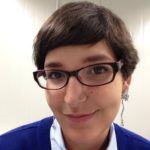
Current Job::
PhD Student! I get paid to study – I consider myself very lucky 🙂
-
Anastasia Aliferi

Current Job::
I’m still a student working towards my PhD in Forensic Genetics. At the same time I’m also working on police cases that need us to use some of our newest tools, like the ones that can tell us how someone looks like or where they are from! I also work as a laboratory demonstrator for the BSc and MSc Forensic Science degrees and as a mentor for the Forensic Science online course of King’s College London on Future Learn (‘The Science Behind Forensic Science’)
My latest work:
Think about the police investigating a crime scene and all they can find is a tiny drop of blood. There are no cameras, no witnesses, no suspects! Now imagine how useful it would be for us if from this blood drop we could tell how the person who left it behind looks, where they come from and how old they are! That narrows things down, right?
I work with multiple projects that look into finding out things like someone’s eye and hair colour, whether they have straight or curly hair and where in the world they originally come from, by just looking at a little bit of their blood. My main focus however, is using blood to guess someone’s age. Unlike our eye colour, our age changes every single day, making our job at calculating it very very difficult! I have spent over 4 years looking at this puzzle and digging into very large piles of data from thousands of different people.
-
Amy Cameron
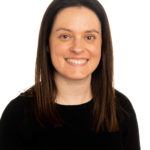
Current Job::
Public Engagement and Communications Officer, School of Life Sciences
-
Alena Pance

Current Job::
I am a Senior Staff Scientist at the Wellcome Sanger Institute. The institute is part of the Genome Campus, located in Hinxton, South Cambridgeshire.
My latest work:
My main work centres around malaria. I am mostly interested in the interaction between malaria parasites and their mammalian hosts and because the infectious cycle of the parasite in the blood is the stage most associated with clinical disease, this is the part of the life cycle I study.
In this age of genetics, we have access to great data about the parasites, but assessing the host is a bit more difficult. This is because the malaria parasites invade red blood cells and as these do not have a nucleus, we don’t have the ‘genetic handle’ to understand and manipulate them. So, my solution is to use stem cells. The way this works is that we either reprogramme induced plutipotent stem cells or IPS from patients or we use some of the already established lines. As these cells have the potential to become almost any cell type, we developed a protocol to turn them into red blood cells, which we then expose to the parasite to see if they can infect.
This allows us to modify some of the proteins normally present in the red blood cell and see whether the parasite still infects them. In this way, we found one of the major receptors for the rodent malaria parasite Plasmodium berghei… yes, mice as well as many other animals suffer from malaria too.
We have also identified some of the major components of human red blood cells that are necessary for the parasite to infect people.
-
Adam Washington
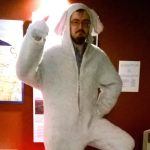
Current Job::
I am Software Scientist at the ISIS Pulsed Neutorn and Muon source. I write software that helps the visiting scientists make the connections between the neutron scattering data that they collect at ISIS and the chemical or biological questions that they are trying to answer.
-
Ieva Cepaite

Current Job::
PhD Candidate
My latest work:
I’m currently trying to come up with Quantum Algorithms to improve solutions to so-called Partial Differential Equations which are very useful in many fields of Physics and Engineering (fluid-dynamics, electrodynamics, elasticity etc.).
Basically I’m trying to come up with new, better methods for old (but important) problems using the incredibly complicated way that Quantum Computers process information. It involves things like superposition and entanglement in order to improve speed or accuracy of solutions.
-
Harikesh Ranganath

Current Job::
After an MSc in Advanced Physics, I am pursuing a PhD in Experimetnal Quantum Optics
My latest work:
I work on a Quantum Gas Microscope. This is essentially a camera with resolution enough to see individual atoms (with a few tricks). We use high intensity lasers to trap Potassium atoms in a vacuum. We then shake them with Raman lasers to make them emit light and we take a picture! Below is what a typical picture looks like (each bright spot is a single atom of Potassium!).

We are very interested in understanding Superconductivity – the phenomenon when a material has zero resistance to electricity. If you put any current into a superconducting loop it will keep flowing forever.
There are a lot of amazing applications for this such as in quantum computing, high power electromagnets, magnetic levitation trains, and so on. Our mobile phones are computers much smaller and much more powerful than the biggest computers even 50 years ago. This became possible because of semi-conductor devices. Similarly, superconductor based devices could dramatically change what’s possible.
Scientists have discovered certain materials which are superconductors, but they only show these properties at extremely low temperatures (-100 celsius). The internal structure of these materials are also not well understood. We use this setup and our high resolution imaging as a “material we can customize”. We can change the properties of this “material” (which in our experiment is a sheet of atoms held in place by lasers) just by configuring our lasers and magnetic fields, hence we can explore how different materials behave in different conditions without having to make and test new materials (which is both difficult and expensive).
-
Francesca Gale

Current Job::
Education Development Lead – I work with scientists and teachers to develop new learning resources around Genomics
My latest work:
My current work involves working with scientists and teachers to develop new learning resources around genomics. All the resources we develop (which are free) can be found here: www.yourgenome.org.
I also run training sessions on genomics for teachers and most recently I have contributed to a new Primer book on genomics 16 year olds and above (due to be published next year)
Most recently Scientists at the Wellcome Genome Campus developed an initiative called Genome Decoders that enables students to help scientists identify and label genes in the genome of a parasitic worm called the Human Whipworm.
-
Edoardo Vescovi

Current Job::
Postdoctoral researcher
My latest work:
I am a theoretical physicist working on simple models of the complex system of nature, at the intersection of mathematics and physics. It is all about simple models of particles that do not directly relate to matter in our universe, but they are simple enough to test and develop mathematical tools that could be used to study matter one day. For example, in these toy models we know how to calculate the force between charged particles and the energy emitted by them in the form of light, all this from little input and few basic mathematical rules. The dream is that a simple description can be possible for our universe as well.
Very loosely speaking, in some of these toy models I have recently derived a formula for the light emission of an accelerated particle and a formula for the attraction of baryons (particles qualitatively similar to protons in atomic nuclei).
-
Eddie Cano Gamez

Current Job::
PhD student in genomics
My latest work:
My current work tries to understand why people develop autoimmune diseases. In these diseases the immune system (which is usually in charge of protecting us from infections) starts attacking and destroying healthy organs in our body. Some examples are lupus, arthritis and multiple sclerosis. However, it is unknown what causes the immune system to attack in such an uncontrolled way. It is believed that the cause could be a combination of our genes and our environment. To answer this, I study the interaction between these two factors by exposing people’s immune cells to different environments. I then analyse the cells using a mix of genetics and data science.
-
David Keeble

Current Job::
Professor, Head of Physics
My latest work:
One of our current projects is as part of a collaboration led by colleagues at National Institute of Advanced Industrial Science and Technology in Japan. It is an international collaboration performing positron lifetime measurements on the same series of well characterized materials that have nano-meter size open-volume (pores or voids) in a number of laboratories across the world. In the materials we are measuring some, in fact the majority, of the positrons we implant move into the nano-meter size open spaces, picking up an electron on the way, and forming what is called a positronium atoms. This is a electron bound to its anti-particle the positron. Those positronium atoms that form where the spins of the two particles are aligned would live for approximately 142 nanoseconds in a vacuum. This is a very long time to us as we typically measure lifetimes a thousand times smaller. However, these positronium atoms ‘bounce’ about inside the pore in the material and so annihilate typically after only a few nanoseconds. From the actual lifetime of the positronium we can calculate the approximate diameter of the pore. Materials scientists cannot easily measure pores/voids with nano-meter size. Our collaboration is aiming to produce standard samples and guidance on how to perform the measurements so that this method can be more widely used.
-
Araceli Venegas-Gomez

Current Job::
I have always been interested in science since I was a child, and kept myself up to date with the latest scientific news. Some years ago I started to participate more actively in science discussions and conferences as a hobby.
I’m actually an aerospace engineer and science lover. After several years working in industry, I decided to follow my passion for science, and became a Physics PhD student! I like to think that I might discover new things about the universe at the quantum level. I love explaining complicated concepts and raising science awareness to the general public.
I fell in love with Quantum Mechanics. I wanted to learn more about it and found it so exciting that when I took the decision to quit my job in industry and go into research, I knew it had to be in that field.
There are just so many unanswered questions and unsolved mysteries about the universe we live in, both at a macro level and, in my case, at the tiniest level.I know, I’m a total science freak!
My latest work:
Many phenomena in the quantum world cannot be investigated directly in the laboratory, and even supercomputers fail at simulating them. Quantum simulators are specific purpose devices designed to provide insight on unique physics problems. I work with quantum simulators, using mathematical models to mimic the interactions of atoms in optical (light-made) lattices. With these investigations we can design specific magnetic properties or control matter to eventually create a quantum computer.
Behind all great technological advances in History there was a huge amount of theoretical work required to understand how things really work. To use a couple of examples, the GPS is based on the Einstein’s Theory of Relativity, and the laser invention relied on understanding the discrete nature of atomic energy levels (the quanta), which is the basis of Quantum Mechanics. Today, lasers are surrounding us and are key part of many commons tools we use daily! Quantum Physics studies the universe at the smallest level, and its applications are part of our daily life, in computers, magnetic resonance, lasers … Specifically in my work, we study quantum magnetism, directly linked to high temperature superconductors, leading to possible new materials in the future.

